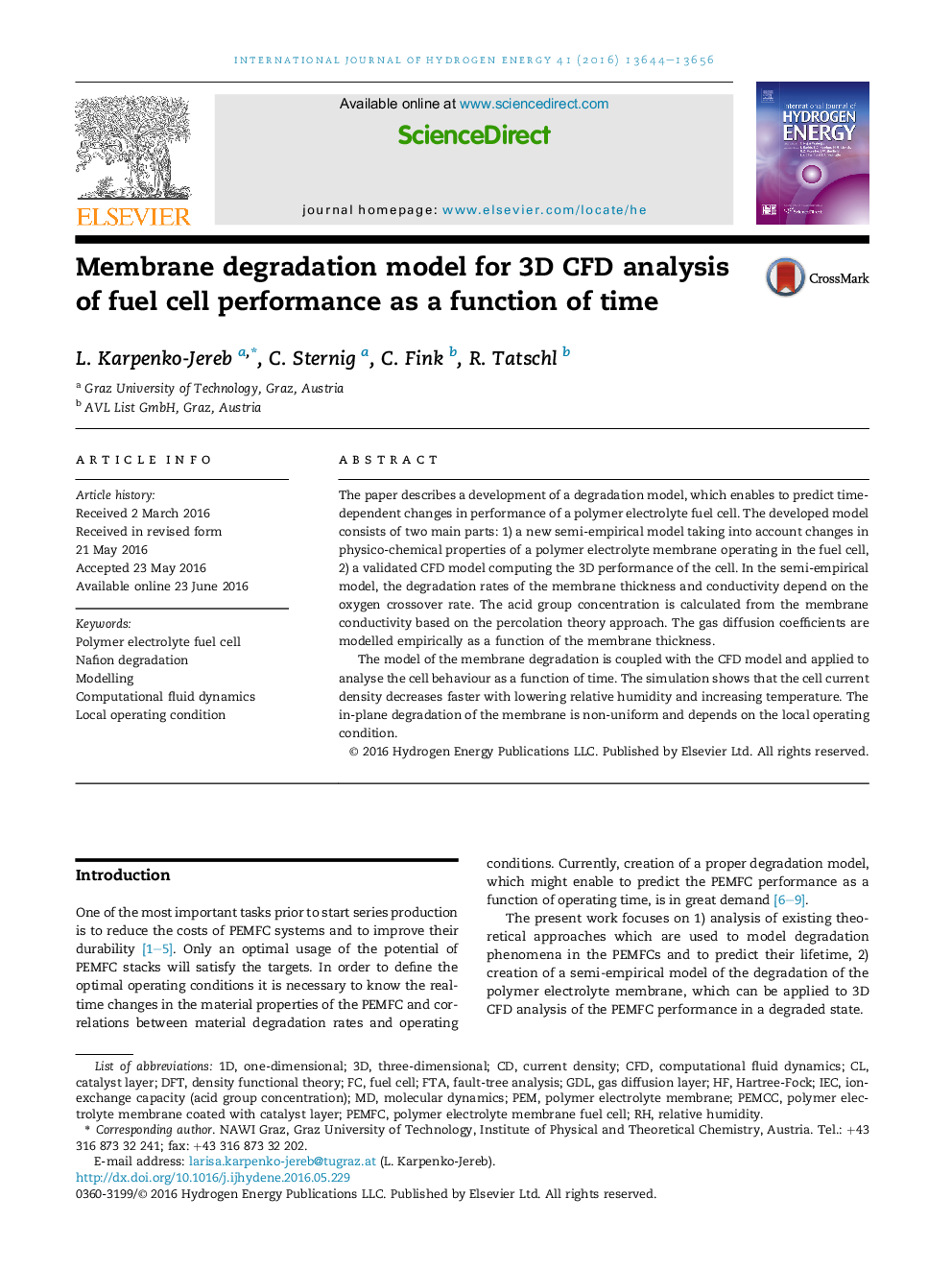| Article ID | Journal | Published Year | Pages | File Type |
|---|---|---|---|---|
| 1276479 | International Journal of Hydrogen Energy | 2016 | 13 Pages |
•A new semi-empirical model of membrane degradation is developed.•The degradation model is coupled with a validated CFD model of the PEMFC.•The coupled models are applied to analyse a single cell in a degraded state.•The cell current drops faster at higher temperature and at lower relative humidity.
The paper describes a development of a degradation model, which enables to predict time-dependent changes in performance of a polymer electrolyte fuel cell. The developed model consists of two main parts: 1) a new semi-empirical model taking into account changes in physico-chemical properties of a polymer electrolyte membrane operating in the fuel cell, 2) a validated CFD model computing the 3D performance of the cell. In the semi-empirical model, the degradation rates of the membrane thickness and conductivity depend on the oxygen crossover rate. The acid group concentration is calculated from the membrane conductivity based on the percolation theory approach. The gas diffusion coefficients are modelled empirically as a function of the membrane thickness.The model of the membrane degradation is coupled with the CFD model and applied to analyse the cell behaviour as a function of time. The simulation shows that the cell current density decreases faster with lowering relative humidity and increasing temperature. The in-plane degradation of the membrane is non-uniform and depends on the local operating condition.
